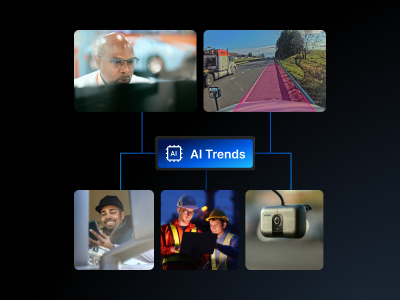Filters
Asset Type
Products
Solution
Install - How to calibrate AI Dashcam
How to calibrate AI Dashcam
Introduction
Once the AI Dashcam is installed properly, it will begin recording. However, in order for an AI-based detection for behaviors like close following to work, your camera needs to go through a quick and simple calibration process. This process helps the camera learn where exactly it is mounted on the vehicle so that it can properly detect lanes, other vehicles, and unsafe driving behaviors.
Steps: Setting up AI Dashcam
1. Once the AI Dashcam is installed properly, the Driver has to drive for 30 minutes on a road with the following conditions:
- The road should be a highway (>35 mph) with at least 3 lanes in each direction
- The road should be straight (no curves, slopes, etc.)
- The road surface should be relatively flat
- The road should have easily visible lane lines
2. Once the camera has gathered sufficient data (roughly 30 minutes of driving), it will automatically be calibrated and AI detection features (such as close following) will begin functioning.
3. Once this process has been carried out successfully, the AI Dashcam will be fully operational for AI features. To confirm this:
- In the Driver App, follow the steps in How to test the AI Dashcam
- In the Fleet Dashboard: open the Vehicle’s page on the Dashboard and review the Camera section to check the installation status at the bottom.
You can visit the Manage Dashcam section of the Driver App (mobile) or the Dashcams tab in the Safety Hub on the Motive Driver Dashboard to check on the status of the AI Dashcam.
Ideal Scenarios for Calibration
Here is a few examples of ideal & non-ideal driving scenarios that can help your camera initialize faster:
a) This is an ideal scenario as lane lines are visible on the flat highway.
b) Your AI Dashcam may not calibrate on a road like this. The number of lanes is insufficient and not clearly visible.











